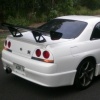Rb30 Block Specs (from Fsm)
Announcements
-
Similar Content
-
Latest Posts
-
I just rolled over "my" first 10k km in the MX5 Every time I go anywhere it always ends up in a adventure to look at houses and find some random country roads I've been on leave since early November but unfortunately need to go back to work on 19 January Luckily though I still have a fair chunk of leave left to burn until.... Not that I'm counting 😁
-
Racing On Motorsport magazine this month features all racing BCNR33 Skyline GT-Rs from the JGTC-era to N1 category. Other articles include one featuring the GT300 class Daishin S14 Nissan Silvia: https://www.oemsoko.co.jp/products/racing-on-magazine-vol-534-racing-r33-gt-r
-
Wait ! What ? My knees are NOT supposed to look like porridge ? ? Ummmm ! I'd best get to the docs ! Maybe there a cream or antibiotics or something! !
-





Recommended Posts
Create an account or sign in to comment
You need to be a member in order to leave a comment
Create an account
Sign up for a new account in our community. It's easy!
Register a new accountSign in
Already have an account? Sign in here.
Sign In Now